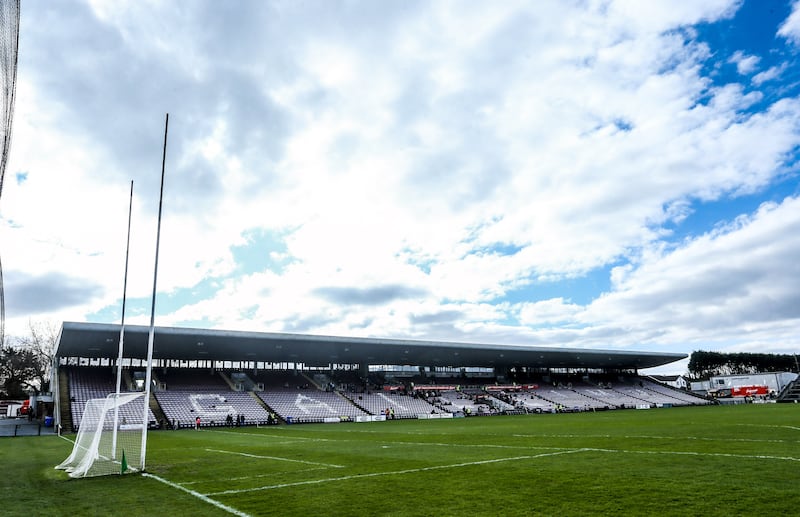“When we went to talk to Government, we said, ‘Look, we are not looking for a load of money just for the GAA, we are looking at facilities that can be shared with other sporting organisations, other sporting institutions’.
“I think we are going to see quite a different model for how sporting facilities are used in the future because every code is really under significant [pressure], every amateur organisation is going to say they are under pressure.”
These were the words of Mary McAleese talking at the Steering Group on Integration press conference on Tuesday, where the Gaelic Athletic Association, the Camogie Association and the Ladies’ Gaelic Football Association announced that full integration of the three bodies would happen in 2027.
But they could also have been applied to the other big GAA news that occurred that day, when the Government announced a further €50 million in funding for the redevelopment of Casement Park.
Inside Gaelic Games: The weekly GAA newsletter from The Irish Times
Keith Rossiter backs Wexford young guns to make their mark in Leinster
Derry’s Anton Tohill on mental health and sport: ‘The biggest wake up call for me was Red Óg’
Kerry secure thrilling extra-time victory over Cork to book Munster final spot
Regardless of what the final cost of Casement Park will be, we can be assured that the GAA will not be footing the majority of the Bill, notwithstanding the possibility that they will be forced to cough up more than the £15 million (€17.5 million) they’ve already committed.
Take yourself back five weeks, when the renaming of Páirc Uí Chaoimh was first mooted. Tánaiste Micheál Martin’s tweet on the matter was seen as a pivotal moment in crystallising opposition to the naming rights being sold. In that tweet, he wrote that the Government “allocated €30 million towards the development of the stadium and never sought naming rights”.
In reality, this current Government didn’t ask for anything at all. And over the decades no government has asked for anything in return for the money that has poured into GAA pitch developments ... other than the expectation that the club members in question would remember who delivered what at the ballot box come election day. This might be politically expedient, but it hardly delivers bang for the taxpayer’s buck.

This month saw another full house at Páirc Uí Chaoimh, from the most reliable tenant they currently have – Munster Rugby. They managed to sell out the ground for a friendly match against the Crusaders of Canterbury, New Zealand, having similarly sold it out for a game against the second-string Springboks in November 2022. This is a level of support that quite frankly puts to shame anything the GAA in Cork has been able to muster (barely 3,500 people at the Cork footballers’ game against Cavan last weekend being a case in point).
Put simply, the GAA can’t afford not to aggressively pursue sporting opportunities outside of their own games for the scale of stadium being built. Their own bank balance, and the basic concept of taxpayer-funded sports infrastructure, demands it.
Leinster Rugby and Bohemian FC are both vying for public money to rebuild their home grounds. Shelbourne would like to redevelop Tolka Park. Dublin GAA’s home ground is nominally Parnell Park, with seating for barely a third of its total capacity. That’s four grounds in Dublin, one on the southside and three on the northside, none of them with a capacity over 20,000, that would benefit from major investment. There doesn’t appear to be a workable solution that offers any sort of value for the Irish taxpayer, but we can at least admit that it’s a waste of money, and commit ourselves to trying to avoid that in the future.
[ Ambitious GAA integration plan faces several challengesOpens in new window ]
In the last month Connacht rugby have announced plans for a redeveloped stadium (with naming rights already secured) using €20 million from the Government, while Pearse Stadium in Salthill is on the other side of town. Pearse Stadium is fine – a perfectly functional, cookie-cutter GAA stadium, in that it has one stand, and three open terraces.
Instead of promising Connacht Rugby money from the public purse to rebuild the Sportsground, surely it would have made sense to put more covered seats in Pearse Stadium, and try and turn it into a modern, comfortable stadium that the entire sporting community can use. Galway United might even make use of it if, as expected, John Caulfield leads them into the Champions League this season.
There are local, regional reasons for all of these different grounds existing, even in a city like Galway. But as we embark on another vast infrastructural project in Casement Park, it falls to everyone in the GAA to ask – is this necessary? Is this providing value-for-money for all the citizens of Belfast? And if it’s not, can we at least make sure the doors of the new stadium are wide open to ensure it’s not a financial albatross similar to Páirc Uí Chaoimh?
[ GAA welcome Government’s €50m funding package for Casement Park redevelopmentOpens in new window ]
Rule 5.1 of the GAA’s rule book states that “all property including grounds, clubhouses, halls, dressing-rooms and handball alleys owned or controlled by units of the GAA shall be used only for the purpose of or in connection with the playing of the games controlled by the GAA and for other purposes in accordance with the aims of the GAA, that may be sanctioned by Central Council”.
The first step is getting rid of this rule. The second step is finding a way to open up these GAA facilities to everyone – and not just our mothers, sisters and daughters in Gaelic games.















